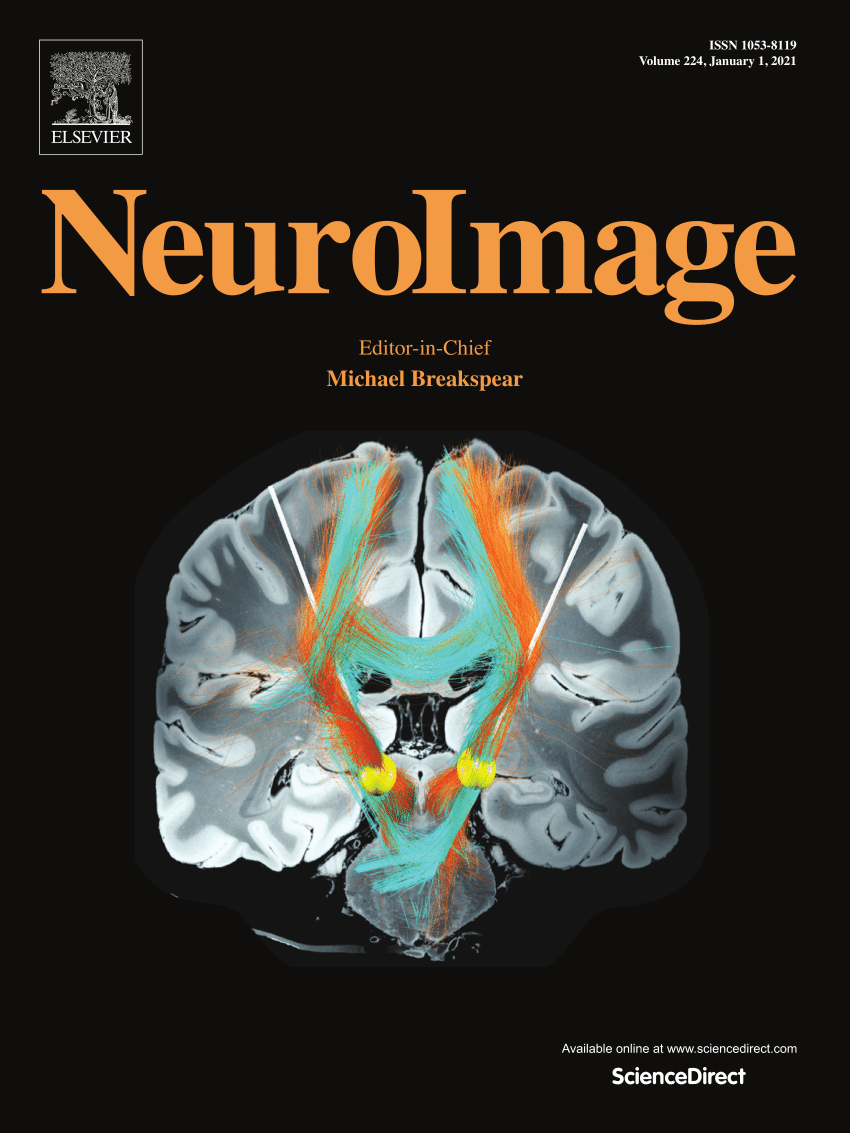白质微结构与青春期、中年和晚年的大脑、身体和遗传特征的联系
IF 4.7
2区 医学
Q1 NEUROIMAGING
引用次数: 0
摘要
先进的扩散磁共振成像(dMRI)可以探测和评估体内脑白质(WM)组织和微观结构。具有不同理论和实践假设的各种dMRI模型已经开发出来,代表了潜在脑生物学的部分重叠特征,在认知和临床神经科学中具有潜在的互补价值。不同的dMRI指标在多大程度上与临床相关的基因和表型相关仍存在争议。因此,我们在英国生物银行(UKB, n=52,140)和青少年大脑认知发展(ABCD)研究(n=5,844)中研究了来自不同dMRI方法的基于导管和全WM骨架参数如何与临床相关和白质相关表型(性别,年龄,脉压(PP),身体质量指数(BMI),大脑不对称)和遗传标记相关联。一般来说,没有一种成像方法可以解释所有检查的表型,尽管这些方法在解释检查表型的可变性方面总体相似。然而,所使用的dMRI方法的特定扩散参数在解释已知与一般人类健康结果相关的一些重要表型时脱颖而出。多室贝叶斯dMRI方法提供了与年龄最强的WM关联,并与弥散张量成像一起,提供了性别分类的最高准确性。我们发现了跨数据集的度量和通道依赖不对称的类似模式,在ABCD数据中具有更强的不对称性。WM与多基因评分和PP的关联程度更多地取决于样本和可能的年龄,而不是dMRI指标。然而,峰度最能指示BMI和潜在的双相情感障碍多基因评分。我们得出结论,WM微结构与临床相关的表型和基因型在生命的不同阶段存在差异。本文章由计算机程序翻译,如有差异,请以英文原文为准。

White matter microstructure links with brain, bodily and genetic attributes in adolescence, mid- and late life
Advanced diffusion magnetic resonance imaging (dMRI) allows one to probe and assess brain white matter (WM) organisation and microstructure in vivo. Various dMRI models with different theoretical and practical assumptions have been developed, representing partly overlapping characteristics of the underlying brain biology with potentially complementary value in the cognitive and clinical neurosciences. To which degree the different dMRI metrics relate to clinically relevant geno- and phenotypes is still debated. Hence, we investigate how tract-based and whole WM skeleton parameters from different dMRI approaches associate with clinically relevant and white matter-related phenotypes (sex, age, pulse pressure (PP), body-mass-index (BMI), brain asymmetry) and genetic markers in the UK Biobank (UKB, n=52,140) and the Adolescent Brain Cognitive Development (ABCD) Study (n=5,844). In general, none of the imaging approaches could explain all examined phenotypes, though the approaches were overall similar in explaining variability of the examined phenotypes. Nevertheless, particular diffusion parameters of the used dMRI approaches stood out in explaining some important phenotypes known to correlate with general human health outcomes. A multi-compartment Bayesian dMRI approach provided the strongest WM associations with age, and together with diffusion tensor imaging, the largest accuracy for sex-classifications. We find a similar pattern of metric and tract-dependent asymmetries across datasets, with stronger asymmetries in ABCD data. The magnitude of WM associations with polygenic scores as well as PP depended more on the sample, and likely age, than dMRI metrics. However, kurtosis was most indicative of BMI and potentially of bipolar disorder polygenic scores. We conclude that WM microstructure is differentially associated with clinically relevant pheno- and genotypes at different points in life.
求助全文
通过发布文献求助,成功后即可免费获取论文全文。
去求助
来源期刊

NeuroImage
医学-核医学
CiteScore
11.30
自引率
10.50%
发文量
809
审稿时长
63 days
期刊介绍:
NeuroImage, a Journal of Brain Function provides a vehicle for communicating important advances in acquiring, analyzing, and modelling neuroimaging data and in applying these techniques to the study of structure-function and brain-behavior relationships. Though the emphasis is on the macroscopic level of human brain organization, meso-and microscopic neuroimaging across all species will be considered if informative for understanding the aforementioned relationships.
 求助内容:
求助内容: 应助结果提醒方式:
应助结果提醒方式:


